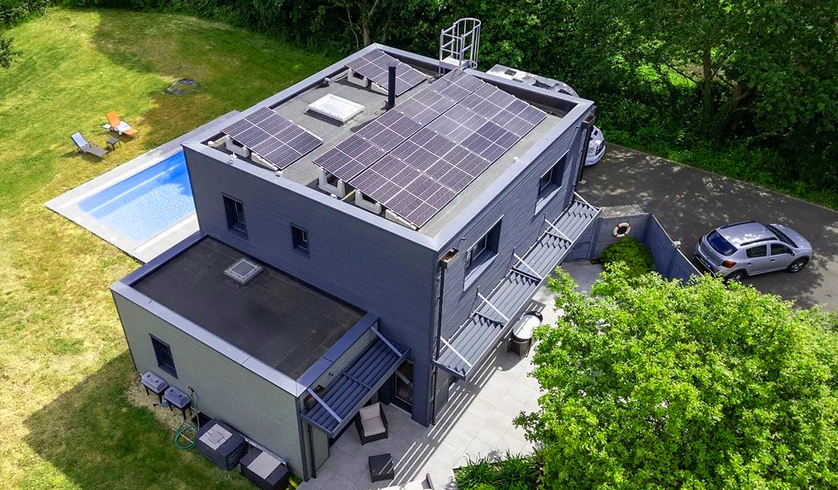Energy resilience has transformed from a niche concern to a global imperative. As grid instability rises and climate goals intensify, businesses and communities seek reliable, sustainable power solutions. Hybrid and off-grid systems—once considered backup options—now represent the forefront of energy innovation. Premium Powers stands at this intersection, delivering integrated systems that transcend traditional grid limitations through intelligent design and cutting-edge technology.
1 The Hybrid Power Ecosystem: Beyond Grid Dependence

Hybrid energy systems seamlessly merge multiple generation sources—typically solar, wind, batteries, and sometimes diesel generators—with advanced control systems. Unlike traditional setups, they dynamically balance supply and demand, storing excess energy and releasing it during deficits. This architecture delivers uninterrupted power while maximizing renewable use.
1.1 Core Advantages:
- Grid Resilience: Hybrid systems strengthen community grids by mitigating outages and reducing transmission losses. Case studies show they enhance grid dependability while slashing greenhouse gas emissions by up to 90% compared to diesel-only solutions .
- Demand-Side Management: AI-driven controllers predict consumption patterns, shifting non-essential loads to high-generation periods. This flattens peak demand curves, lowering energy costs by 15–30% .
- Multi-Source Flexibility: In Brazil’s Amazon region, a hybrid mini-grid combining PV panels, LiFePO4 batteries, and a diesel generator reduced fuel consumption by 78% while maintaining grid stability during rainy seasons .
1.2 Technical Innovations:
- Smart Inverters: Premium Powers’ systems utilize inverters with <5ms response times, synchronizing solar/wind inputs with battery discharge cycles to prevent frequency fluctuations .
- Predictive Analytics: Machine learning algorithms forecast weather and usage trends, pre-emptively adjusting storage levels. This extends battery life by 20% and minimizes generator runtime .
2 Off-Grid Systems: Engineering Energy Autonomy

Off-grid solutions cater to remote or grid-vulnerable areas, operating independently through self-contained generation and storage. Premium Powers designs these systems for absolute energy sovereignty, whether for mountain cabins or industrial facilities.
2.1 Critical Components:
- Solar Panels: Monocrystalline PV modules (22–24% efficiency) form the primary generation layer, sized according to location-specific solar insolation data .
- Battery Banks: Lithium iron phosphate (LiFePO4) batteries dominate modern installations due to 6,000+ cycle lifespans and 80% depth of discharge (DoD). Lead-acid alternatives remain viable for budget-limited projects at 50% DoD .
- Charge Controllers & Inverters: MPPT controllers optimize harvest efficiency by 30%, while pure sine wave inverters ensure appliance-safe AC power .
Table: Off-Grid System Sizing Guide
| Component | Sizing Principle | Example (Daily Use: 719Wh) |
|---|---|---|
| Battery Capacity | Daily Use ÷ (Voltage × DoD) | 719Wh ÷ (12V × 0.8) = 75Ah (Li) |
| Solar Array | (Daily Use × 1.3) ÷ Peak Sun Hours | (719Wh × 1.3) ÷ 4h = 234W |
| Inverter Rating | 125% of Maximum Simultaneous Load | 1000W for 800W load |
2.2 Design Considerations:
- Energy Audits: Precise load profiling is non-negotiable. A household using 25kWh/day requires 8–10kW solar arrays and 30kWh storage in South Africa .
- Seasonal Buffering: Systems are oversized by 30–40% to compensate for winter lows or monsoons, with generators as fail-safes .
- Cost Variables: In South Africa, a full off-grid installation ranges from R150,000 (basic) to R1+ million (premium autonomy). A typical 3-bedroom home averages R250,000 .
3 Real-World Applications: Case Studies

3.1 Remote Telecom Towers (Ethiopia):
Mobile base stations in West Arsi, Oromia, transitioned from diesel generators to PV/battery hybrids using HOMER software modeling. Results revealed:
- Cost Savings: NPC (Net Present Cost) dropped to $57,508 versus $89,200 for diesel-only.
- Emission Reductions: CO₂ output fell by 16 tons/year per tower .
3.2 Community Mini-Grids (Brazil):
CEAMAZON’s hybrid grid at Federal University of Pará blends PV, diesel, and LiFePO4 storage. Operating in on/off-grid modes, it achieved:
- Fuel Reduction: 78% less diesel consumption despite Amazonian cloud cover.
- Financial Payback: 4–6 years via lowered grid imports and maintenance .
3.3 Urban Residential (South Africa):
Facing erratic grid supply, a Cape Town household adopted a 10kW solar + 40kWh battery system. Despite a R250,000 investment, it eliminated blackouts and cut long-term costs by 60% over 15 years .
4 Overcoming Deployment Challenges

Intermittency Management:
Hybrid systems counteract solar/wind variability through multi-layered storage. Premium Powers prioritizes LiFePO4 batteries for rapid response (0.2s ramp-up) and integrates supercapacitors for microsecond-level surges .
Cost Barriers:
- Battery Expenses: While 87% cheaper than in 2010, lithium storage still constitutes 40–50% of system costs. Premium Powers offers phased deployments—starting with critical load panels—to distribute investments .
- Installation Complexity: AI-powered design tools automate component matching, reducing planning errors by 25% .
Regulatory Frameworks:
Countries like Brazil now incentivize hybrid grids via resolutions (e.g., ANEEL 687/2015), allowing storage-to-grid exports. Premium Powers navigates local policies to expedite permitting .
5 The Road Ahead: Premium Powers’ Vision

Technology Trends:
- Solid-State Batteries: Upcoming 500 Wh/kg density batteries will shrink storage footprints by 70%.
- Hydrogen Hybridization: Pilot projects explore green H₂ as multi-day backup, replacing diesel gensets .
Market Expansion:
- Microgrids-as-a-Service: Premium Powers’ subscription models cover maintenance/fuel, appealing to farms and factories seeking zero-capex solutions.
- EV Integration: Bidirectional chargers enable electric vehicles to power homes during outages, creating virtual microgrids .
Sustainability Impact:
Each 10kW hybrid system deployed prevents 12 tons of CO₂ annually. With 200+ installations, Premium Powers offsets emissions equivalent to 480 acres of forest .
6 Conclusion: The Energy Independence Imperative

Hybrid and off-grid systems have evolved from emergency backups to cornerstones of energy strategy. Premium Powers’ solutions—engineered for scalability and intelligence—address three converging crises: grid fragility, climate change, and rising tariffs. By integrating predictive analytics, high-density storage, and adaptive hardware, they transform sunlight and wind into unwavering power.
The future belongs to decentralized, resilient networks. As battery prices fall and renewables dominate, Premium Powers makes energy independence not just feasible but inevitable—one home, one community, one industry at a time.




